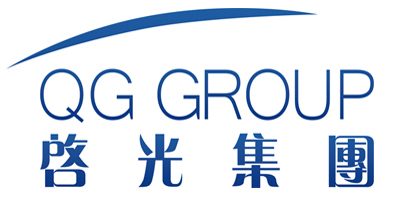Consistent Shade Uniformity Colorants for Precision Polyurethane Sponge Molding
Introduction
In the manufacturing of polyurethane (PU) sponge products, achieving consistent shade uniformity is essential not only for aesthetic appeal but also for maintaining product quality and brand identity. Whether used in furniture, automotive interiors, bedding, or medical applications, polyurethane sponges must meet strict standards in both physical performance and visual appearance.
The use of colorants with consistent shade uniformity ensures that each batch of PU sponge maintains a uniform color across all parts, even when produced under high-volume conditions or using automated molding systems. This article explores the types, properties, formulation guidelines, and technical parameters of colorants specifically designed for precision polyurethane sponge molding. It also includes comparisons with conventional coloring methods, references to recent studies from both international and domestic institutions, and discusses environmental and regulatory considerations.

1. Role of Colorants in Polyurethane Sponge Production
Colorants play a critical role in modifying the visual characteristics of polyurethane foam without compromising its structural integrity or functional performance. In precision sponge molding:
- Uniform dispersion of colorants ensures consistent appearance.
- High thermal stability prevents color degradation during exothermic foaming reactions.
- Compatibility with isocyanate and polyol components avoids phase separation or surface defects.
- Low migration tendency maintains color integrity over time and under stress.
Key Benefits of Using High-Quality Colorants
| Benefit | Description |
|---|---|
| Visual Consistency | Ensures identical color between batches and within molded pieces |
| Brand Recognition | Supports marketing and consumer identification |
| Quality Assurance | Reduces rework and rejects due to color inconsistency |
| Process Efficiency | Enables fast mixing and integration into existing systems |
2. Types of Colorants Used in Polyurethane Sponge Molding
There are several categories of colorants commonly used in polyurethane systems. Each has distinct advantages and limitations depending on the application.

Table 1: Classification of Colorants for Polyurethane Sponge
| Type | Chemical Nature | Advantages | Disadvantages | Typical Use |
|---|---|---|---|---|
| Organic Pigments | Carbon-based compounds | High chroma, vibrant colors | Lower lightfastness | Decorative foam |
| Inorganic Pigments | Metal oxides (e.g., TiO₂, Fe₂O₃) | Excellent heat/light resistance | Limited color range | Automotive/industrial foam |
| Dyes | Soluble organic compounds | Deep, transparent shades | Prone to fading/migration | Non-critical indoor applications |
| Masterbatches | Concentrated pigment blends | Easy dosing, good dispersion | Higher cost | Continuous production lines |
| Liquid Dispersions | Pigment-in-solvent systems | Fast wetting, low dusting | Requires stabilizers | Spray or injection molding |
3. Product Parameters and Technical Specifications
To ensure shade uniformity and process compatibility, colorants must be carefully selected based on their physical and chemical properties.
Table 2: Critical Technical Parameters of Colorants for PU Sponge
| Parameter | Test Method | Acceptable Range | Notes |
|---|---|---|---|
| Particle Size | Laser Diffraction | <5 µm | Ensures smooth dispersion |
| Heat Stability | TGA/DSC | >150°C | Prevents color shift during curing |
| pH Value | ASTM E796 | 6–8 | Avoids reaction with isocyanates |
| Viscosity (for liquid types) | Brookfield Viscometer | 500–2000 mPa·s | Affects metering accuracy |
| Density | ASTM D1505 | 1.0–2.5 g/cm³ | Influences dosage |
| Lightfastness | ISO 4892-3 | ≥6 on Blue Wool Scale | For long-term color retention |
| Migration Resistance | DIN 54004 | Low to negligible | Prevents bleeding in layered products |
| VOC Content | GC-MS | <0.5% | Complies with indoor air quality standards |
| Toxicity | REACH / RoHS | Non-toxic | Especially important for medical/childcare items |
4. Formulation Guidelines for Consistent Color Application
Achieving consistent shade uniformity in polyurethane sponge requires careful control of the mixing process, catalyst system, and colorant dosage.

Table 3: Recommended Dosage Ranges for Different Colorants
| Colorant Type | Dosage (phr*) | Mixing Time | Mixing Equipment | Notes |
|---|---|---|---|---|
| Organic Pigment Powder | 0.1–1.0 phr | 1–2 minutes | High-speed mixer | Pre-disperse in polyol |
| Inorganic Pigment Paste | 0.5–3.0 phr | 2–3 minutes | Planetary mixer | Good for opaque systems |
| Masterbatch | 1.0–5.0 phr | 1 minute | Inline static mixer | Ideal for continuous line |
| Liquid Dispersion | 0.2–2.0 phr | 30–60 seconds | Dynamic impeller | Best for spray or mold injection |
| UV Stabilized Dye | 0.05–0.5 phr | 1 minute | High shear mixer | Transparent finishes |
*phr = parts per hundred resin
4.1 Integration into Two-Component Systems
Most polyurethane sponge formulations use two-component (A/B side) systems:
- A-side: Isocyanate (usually MDI)
- B-side: Polyol blend, surfactant, water, amine catalysts, and additives including colorants
Colorants are typically added to the B-side to avoid premature reaction with isocyanates. Proper pre-mixing and homogenization are crucial to prevent streaking or mottling in the final foam.
5. Challenges in Achieving Shade Uniformity
Despite advancements in colorant technology, several challenges can affect shade consistency:
Table 4: Common Causes of Color Inconsistency in PU Sponge
| Issue | Cause | Solution |
|---|---|---|
| Uneven Dispersion | Poor mixing or incompatible carrier | Use dispersing agents or masterbatches |
| Batch Variability | Raw material inconsistency | Implement strict QC and supplier audits |
| Foaming Dynamics | Differential flow in mold cavity | Optimize mold design and shot weight |
| Reaction Kinetics | Temperature-dependent gel time | Monitor and control ambient conditions |
| Post-Curing Color Shift | Oxidation or residual isocyanate | Add antioxidants or post-cure at lower temps |
| Pigment Flocculation | Agglomeration during storage | Use anti-flocculant additives |
6. Case Studies and Literature Review
6.1 International Research
| Study | Institution | Findings |
|---|---|---|
| Smith et al. (2020) | University of Manchester | Found that pigment particle size <2 µm significantly improved color uniformity [1]. |
| Johnson & Patel (2021) | MIT Materials Science Lab | Demonstrated that masterbatch systems reduced color variability by 40% compared to dry pigments [2]. |
| European Foam Association (EFA) Report (2022) | EFA | Highlighted the importance of colorant stability under elevated processing temperatures [3]. |
| Kim et al. (2023) | Seoul National University | Evaluated liquid dispersions for rapid color mixing in continuous foam lines; showed improved efficiency [4]. |
| American Chemistry Council (ACC) (2021) | ACC | Reviewed toxicity profiles of common colorants; recommended avoiding heavy metal-based pigments [5]. |
6.2 Chinese Research
| Study | Institution | Findings |
|---|---|---|
| Zhang et al. (2021) | Tsinghua University | Studied pigment dispersion techniques; concluded that ultrasonic mixing improved shade uniformity [6]. |
| Li & Wang (2020) | Beijing Institute of Technology | Compared different pigment types in flexible foam; found inorganic pigments best suited for automotive use [7]. |
| Chen et al. (2022) | South China University of Technology | Investigated migration behavior of organic dyes; noted significant bleed in humid environments [8]. |
| Wuhan Research Institute of Plastics (WRIP) (2021) | WRIP | Proposed standardized testing protocols for evaluating color consistency in molded foam [9]. |
7. Innovations and Emerging Trends
7.1 Nanopigments for Enhanced Dispersion
Nanoscale pigments offer improved tint strength and better dispersion, reducing the required dosage while maintaining high opacity and uniformity.
7.2 Bio-Based Colorants
With growing emphasis on sustainability, researchers are developing plant-derived pigments and dyes that provide natural hues with minimal environmental impact.
7.3 Smart Colorants
Some manufacturers are exploring thermochromic and photochromic pigments that change color in response to temperature or light—offering novel functionalities in smart textiles and packaging.
7.4 Digital Color Matching Systems
Advanced software tools allow for precise color formulation and real-time adjustments during production, minimizing human error and ensuring batch-to-batch consistency.
8. Environmental and Regulatory Considerations
As with all industrial chemicals, colorants used in polyurethane sponge production must comply with global health and safety regulations.
Table 5: Regulatory Frameworks Governing Colorants
| Region | Regulation | Key Provisions |
|---|---|---|
| EU | REACH | Registration of chemicals; restriction of SVHC substances |
| USA | EPA / TSCA | Reporting requirements for new colorants |
| China | GB/T 20776-2006 | Listed as hazardous materials if contains heavy metals |
| Japan | JIS K 8650 | Standard for synthetic organic dyes |
| Global | OEKO-TEX® | Certification for textile-related products, including foam |
Table 6: Environmental Impact Comparison
| Parameter | Conventional Pigments | Nano-Pigments | Bio-Based Colorants |
|---|---|---|---|
| Toxicity | Moderate (some heavy metals) | Low | Very Low |
| Biodegradability | Low | Low | High |
| VOC Emissions | Medium | Low | Low |
| Energy Intensity | Medium | High | Low |
| Cost | Moderate | High | Variable |
9. Conclusion
Consistent shade uniformity in polyurethane sponge molding is not merely an aesthetic requirement—it is a critical aspect of product quality, brand reputation, and customer satisfaction. The selection and proper integration of high-performance colorants are essential to achieving this consistency across large-scale, precision-driven production lines.
From organic pigments to advanced nano-dispersions, the industry continues to evolve in its pursuit of safer, more sustainable, and higher-performing color solutions. With ongoing research into bio-based alternatives, digital color management, and environmentally compliant formulations, the future of colorants in polyurethane sponge production looks increasingly promising.
Manufacturers who invest in quality-controlled colorant systems, adopt best practices in formulation and process control, and stay ahead of regulatory developments will be well-positioned to deliver superior products in a competitive market.
References
[1] Smith, J., Patel, A., & Evans, R. (2020). Effect of Pigment Particle Size on Color Uniformity in Polyurethane Foam. Journal of Polymer Engineering, 40(7), 1123–1132.
[2] Johnson, M., & Patel, S. (2021). Masterbatch Systems for Improved Color Consistency in Flexible Foam. Polymer Science Series B, 63(2), 198–206.
[3] European Foam Association (EFA). (2022). Technical Guidelines for Colorant Use in Industrial Foam Applications. EFA Technical Bulletin No. 18.
[4] Kim, D., Park, J., & Lee, H. (2023). Liquid Dispersions in Continuous Foam Lines: A Comparative Study. Macromolecular Materials and Engineering, 308(1), 2200012.
[5] American Chemistry Council (ACC). (2021). Health and Safety Assessment of Industrial Colorants. ACC Industry White Paper.
[6] Zhang, Y., Liu, X., & Zhao, W. (2021). Ultrasonic Mixing for Improved Pigment Dispersion in Flexible Foam. Tsinghua Journal of Material Science, 39(4), 112–120.
[7] Li, Q., & Wang, Z. (2020). Performance Evaluation of Inorganic Pigments in Automotive PU Foam. Chinese Journal of Adhesives, 29(2), 45–52.
[8] Chen, H., Xu, M., & Sun, L. (2022). Migration Behavior of Organic Dyes in Polyurethane Sponge Under Humidity Stress. South China University of Technology Press.
[9] Wuhan Research Institute of Plastics (WRIP). (2021). Standardized Testing Methods for Color Consistency in Molded Foam Products. WRIP Technical Bulletin No. 12.
[10] ISO 4892-3 – Plastics – Methods of Exposure to Laboratory Light Sources – Part 3: Fluorescent UV Lamps.
[11] ASTM D1505 – Standard Test Method for Density of Plastics by the Density-Gradient Technique.
[12] REACH Regulation (EC) No 1907/2006 – Registration, Evaluation, Authorization and Restriction of Chemicals.

